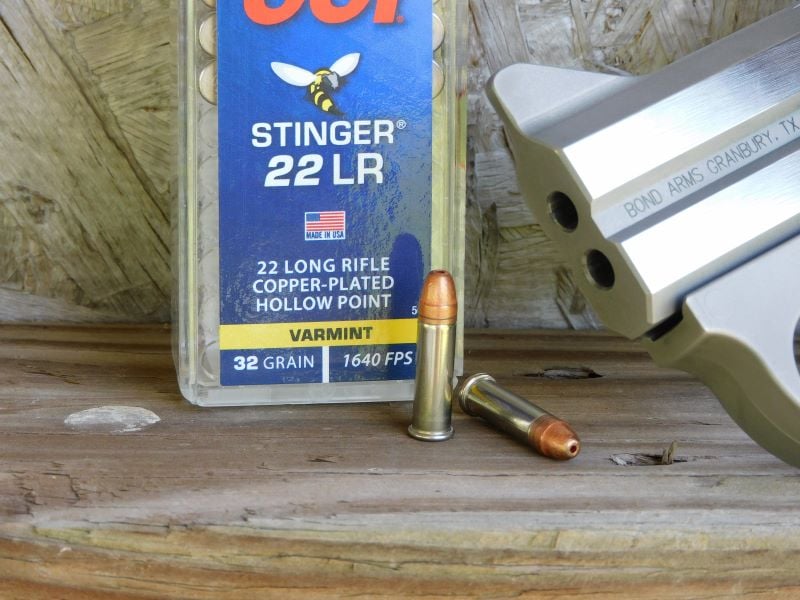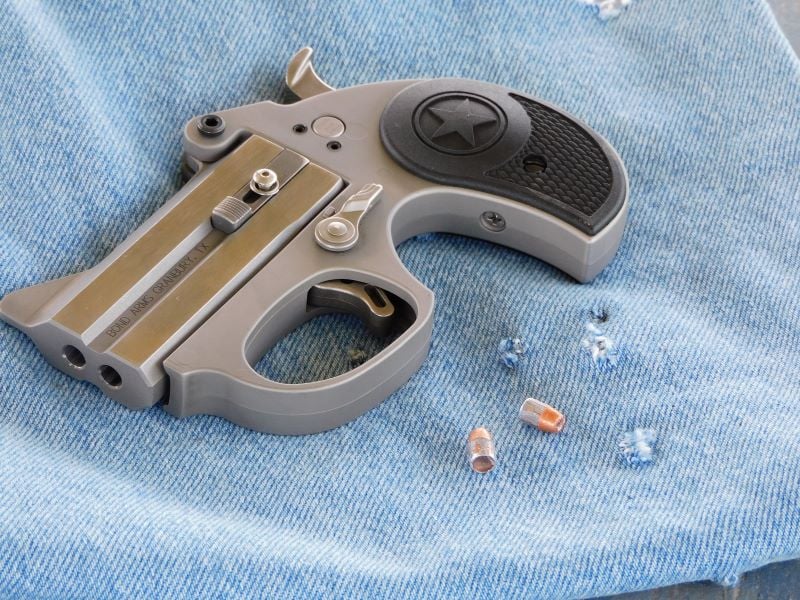It is hard to think of a time when the 22 Long Rifle cartridge did not enjoy massive popularity. Before the Second World War, most 22 LR loads were standard velocity 40-grain lead bullet loads that were not especially powerful or reliable. In the world of personal protection in handguns, the 22 LR was less popular than the 25 ACP and even the 22 Short. Even as high-velocity loadings came onto the market after the war, the status quo did not change until the introduction of the CCI Mini Mag and CCI Stinger.

Both rounds were packaged in small lots and were primed more reliably than what had come before. The CCI Stinger, when it was introduced in 1975, was the first attempt to push the power factor of the little 22 even further. It hit harder and was more reliable than the garden variety 22 LR loads available at the time.
Although the Stinger is designed as a hypervelocity varmint round, its extra power was harnessed in the handgun world. Soon enough, 22 LR handguns designed for personal protection supplanted the other small caliber options. Among those who trust a 22 for personal defense, the CCI Stinger is one of the very few rounds I have heard recommended by name. But how good is it? Follow along as we explore the CCI Stinger.
The Load
The CCI Stinger uses a light-for-caliber 32-grain copper-washed lead hollow-point and a slightly longer case to achieve an advertised velocity of 1640 feet per second. Most 40-grain high-velocity loads have an advertised rifle velocity of 1280 feet per second. The CCI Stinger, as far as I have always known, uses nickel-plated cases to ward off corrosion when exposed to moisture. The rounds come packaged in small 50-round lots in plastic trays.

Accuracy
I first became familiar with the CCI Stinger when I was on the search for a flatter-shooting 22 LR load for pest control. Most 22 LR high-velocity loads drop 3-4 inches at 100 yards when fired from a rifle. These rounds can be affected by the wind in that short of a distance as well. Standard velocity rounds suffer even worse. In my own experience, the CCI Stinger drops only 1½ to 2 inches and is less affected by wind drift. It also arrives with more energy on target once it gets there.
The price for this performance comes with accuracy. In general, lower velocity rounds tend to print the tightest groups on paper. I can generally coax five rounds at 50 yards into a 1½ inch group and 3½ inches at 100 yards. But what about shooting the CCI Stinger out of a handgun at typical handgun distances? There is more blast and report out of a handgun and plenty of muzzle flash as unburned powder ignites in the open air. Groups tend to be a little wide for small game-getting but more than acceptable for social work.
Velocity
The CCI Stinger remains one of the highest velocity 22 LR loads on the market, but I have yet to get 1640 feet per second out of it. But it is still a screaming round, even when fired out of a typical handgun.
| Firearm | Muzzle Velocity |
| Bond Arms Stinger 3 inch | 1108 |
| Ruger Wrangler 3 ¾ inch | 1196 |
| Ruger Single Six 5 ½ inch | 1300 |
| Marlin Papoose 16 inch | 1466 |
| Browning SA-22 19 3/8 inch | 1551 |
| Marlin Model 60 21 inch | 1438 |
The CCI Stinger will likely not reach the advertised velocity. But using the real numbers as a guideline, we see the Stinger loses surprisingly little velocity in standard handgun-length barrels, but the loss is more pronounced as barrels become shorter. There also seems to be an ideal rifle barrel length for the Stinger. It is between 18-20 inches, as velocity decreases with both the 16-inch and 21-inch barreled rifles. The rule that more barrel equals greater velocity is true, but up to a point.
Ballistic Gel Test With CCI Stinger
When it comes to personal defense and concealed carry, a short-barreled handgun will likely get the nod. On paper, it is also the worst-case scenario ballistically. To get a comparable idea of how the CCI Stinger stacks up for personal protection, I assembled two Clear Ballistics 10% gelatin blocks fronted by four layers of denim cloth. This represents heavy clothing and muscle tissue of the intended target.
Hitting a heavily clothed subject with a short-barreled 22 pistol is not a recipe for universal bliss, but the Stinger did surprisingly well. Using my Bond Arms Stinger, I hit my blocks with four shots from 10 feet away. All four projectiles tumbled after traversing the denim barrier into the gelatin.

While normal high velocity 22 LR and 25 ACP ammunition will zip through without a discernable disruption in the wound path, the Stinger stretched the blocks as each round tumbled. The stretch cavity was modest in size between the 1-3 inch mark on most of the projectiles, although one projectile created an inch-wide stretch cavity between the 4-7 inch mark. All four projectiles were captured. Half of them were facing base forwards. One stopped short, with 11½ inches of penetration. One hit the foot mark. Two others stopped at the 13½ and 13¾ inch mark. The recovered projectiles had no expansion, but a minute amount of deformation on the small hollow-point cavities.

Parting Shots
When Federal Premium launched its 22 LR Punch ammunition in 2021, I thought it could be a viable load for personal protection. It is similar to the Stinger, except it uses a flat-nosed 29-grain bullet instead of a 32-grain hollow point. It was also developed specifically for short-barreled handguns. The Stinger is not.
The Punch load penetrates extraordinarily well, and I suspected the Stinger would fall short. Hollow points tend to have more drag in gelatin as well as tissue, whether or not the cavity opens up. A solid bullet will meet less resistance and penetrate more. The CCI Stinger tends to expand handsomely in rifle-length barrels and the round gets less penetration than solid-point loads. But the loss of velocity when paired with a handgun actually worked to the Stinger’s advantage.
While the Federal Punch load has yet to be beaten in raw penetrating power, it came at the sacrifice of damage. That flat-nosed bullet punched straight and true without tumbling or inflicting any damage. Despite its lighter hollow-point bullet, the Stinger got adequate penetration and dealt more damage to the blocks than the Federal Punch load. Even in the face of new purpose-built 22 LR handgun ammunition, the CCI Stinger continues to hold its own after nearly 50 years and is a round worth keeping handy.

